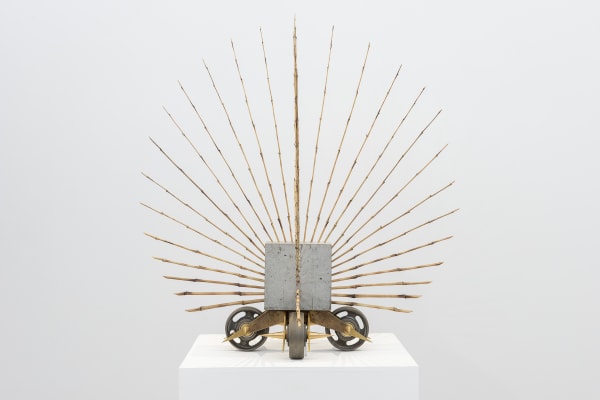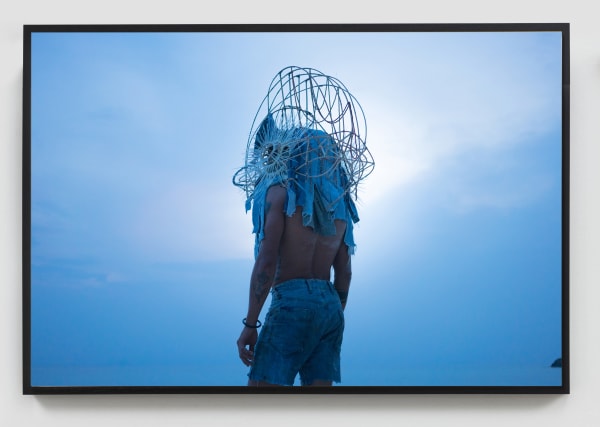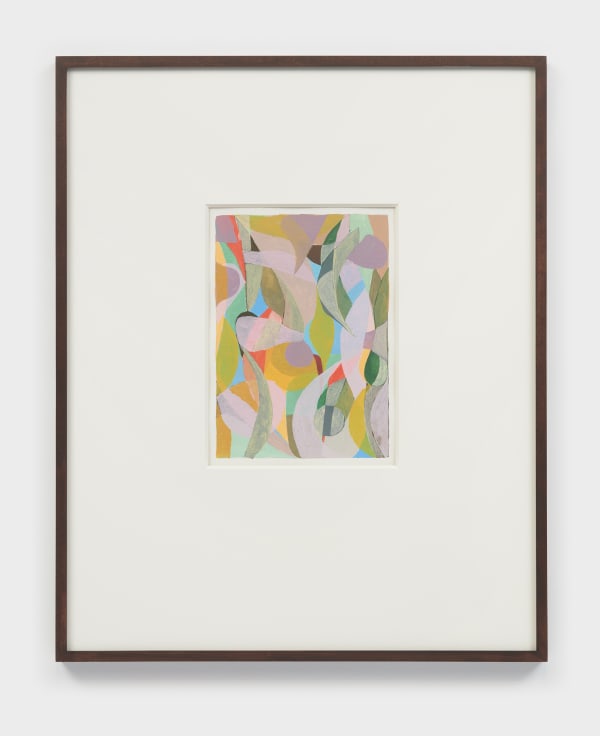-
For the inaugural Frieze Los Angeles: Viewing Room, James Cohan will present a selection of new and important work by Kathy Butterly, Simon Evans™, Spencer Finch, Gauri Gill, Federico Herrero, Yun-Fei Ji, Josiah McElheny, Lee Mullican, Jordan Nassar, Tuan Andrew Nguyen, Scott Olson, Eamon Ore-Giron, Fred Tomaselli, Bill Viola and Grace Weaver. The online fair is open to the public from July 29 to August 1, with a preview on July 27 and 28 to Frieze members and by invitation.
In advance of the fair, preview a selection of available works here.
-
Jordan Nassar
-

-
Spencer Finch
-

-
Tuan Andrew Nguyen
-
In Radiant Remembrance, Nguyen reconstitutes the object as a memorial structure that allows him to parse the traumas caused by the tensions between the natural and built environments, between nature and the man-made.
The sculpture is studded with bamboo, radiating outward from the block in a manner akin to the bristling quills of a porcupine and reconfigured in the symmetry of a Buddhist mandala. Bamboo grows naturally and abundantly in areas that the artist refers to as the tropical Global South. It has been used for centuries as a construction material and is heralded as a sustainable and renewable resource. It also holds a more geographically-specific history: in the Vietnam War, guerilla fighters used bamboo to create booby traps, using the material as a strategy to equalize the military technology of the French and US armies.
-
Tuan Andrew Nguyen explores the power of storytelling through video, sculpture and photography. Situated at the intersection of politics and history, Nguyen employs Vietnam's spiritual culture and tumultuous past as grounding forces to navigate global systems of power. Nguyen extracts and re-works dominant, oftentimes colonial histories and supernaturalisms into vividly imaginative vignettes.
-

-
GAURI GILL
-

-
Scott Olson
-

-
Grace Weaver
-
In her recent paintings, Grace Weaver continues her distinctive imagery of emblematic figures, portraiture, and urban scenes and scenarios. Expanding her vocabulary, the new works are painted with increasing directness and energy.
Painted in a more subdued palette than Weaver's earlier works, in Get-together (II) (2021), the emphasis shifts to shape. The hatted figure rises to monumental proportions. On the same plane and in the same materiality, the personal attributes of the subject–her sideways glance and wrapped hands–come to the fore with the same force as her black accessories. In the resulting composition, the figure, objects, and abstract shapes appear locked together as if in rhyme.of gold, the paintings in this series are each a variation on the one that came before, suggesting a trajectory of future iterations. Their chromatic planes play on spatial recession and optical perception as they trace an infinite path forward.
-
Lee Mullican
-

-
Available Works
-
 JORDAN NASSAR, How blue is the sea !, 2020
JORDAN NASSAR, How blue is the sea !, 2020 -
 SPENCER FINCH, Color Notes (Winter) 2020, II, 2021
SPENCER FINCH, Color Notes (Winter) 2020, II, 2021 -
 TUAN ANDREW NGUYEN, Spirit of Bidong, 2020$ 12,500.00
TUAN ANDREW NGUYEN, Spirit of Bidong, 2020$ 12,500.00 -
 TUAN ANDREW NGUYEN, Radiant Remembrance, 2021$ 30,000.00
TUAN ANDREW NGUYEN, Radiant Remembrance, 2021$ 30,000.00
-
Frieze Los Angeles: Viewing Room: Online Art Fair
Past viewing_room


























